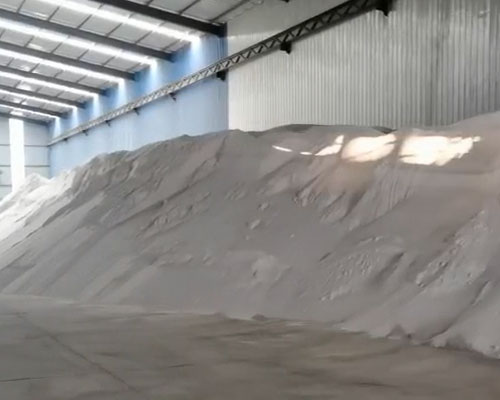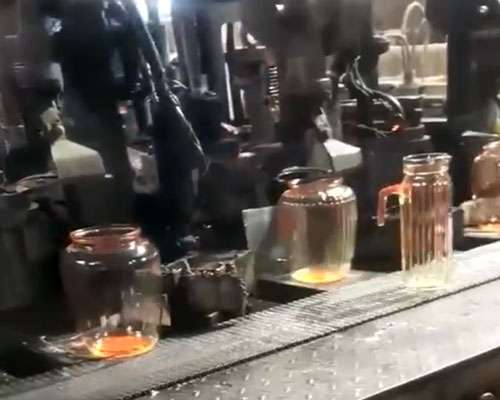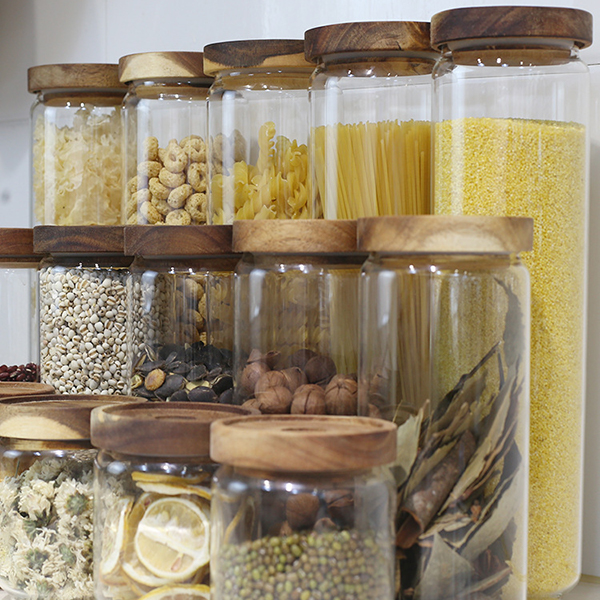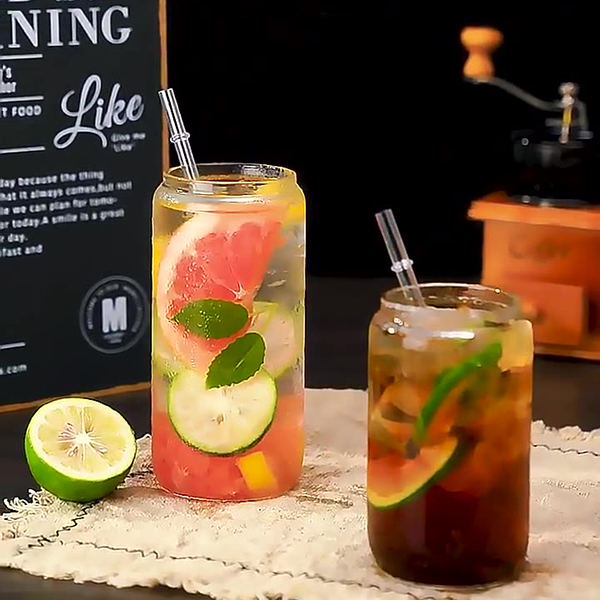Glass, as the earliest packaging and decoration material in human society, has existed on the earth for thousands of years. As early as 3700 BC, the ancient Egyptians had made glass decorations and simple glassware, including glass jars with lids and other products.
In modern society, glass continues to promote the progress of human society. From the optical glass lenses used in telescopes for human exploration of space to the optical fiber glass used in information transmission, as well as the light source glass brought by the light bulb invented by Edison, all reflect the importance of glass materials.
1. The raw material source of glass jars with lids is green
Glass jars with lids used the raw materials mainly include quartz sand, borax, soda ash, limestone, etc. According to different glass performance requirements, a small amount of other auxiliary raw materials can be added to adjust the glass properties. These raw materials are environmentally friendly if protective measures are taken during use. Moreover, with the development of glass technology, the selection of raw materials has become non-toxic raw materials that are harmless to the human body and the environment, and mature safety protection measures are in place during use to ensure that the raw materials of glass are green and healthy.


2. The glass jars with lids production process is environmentally friendly
Glass jars with lids have four main steps in the production process: batching, melting, forming annealing, and processing. The entire production process has achieved intelligent production and control. Operators only need to set and adjust process parameters in the control room and implement centralized monitoring of the entire production process, which greatly reduces the intensity of work and improves the working environment of workers. Multiple quality and emission monitoring points have been established during the glass jars production process to monitor gas emissions during the production process and strictly ensure that glass production complies with national environmental protection standards.
At present, in the production process of glass jars with lids, the heat source of the glass melting process is mainly clean energy such as natural gas fuel and electric energy, which are strongly advocated by the country. With the development and progress of glass production technology, oxygen combustion technology, and electric melting technology are applied in glass production, which greatly improves thermal efficiency, reduces energy consumption, and saves energy.
3. Glass jars with lids have multiple uses
Glass jars with lids without lids can be used to grow flowers, grass, and fish. Glass jars with lids can be used to store food. Mini glass jars can be used to store condiments, separate cosmetics, shampoo, shower gel, and espresso. The medium-sized glass jar can be used to store oatmeal and salad, and the glass jar with handles can be used as a water cup, beverage cup, coffee cup, milk cup, and beer cup. Large airtight glass jars can be used to store pickled foods, cereals, fruits, candies, flour, and pasta. Or use glass jars to store money and small meaningful items.


4. Glass jars with lids are safer and healthier
Today’s major industrial countries in the world require that packaging materials should be “3R1D” (Reduce, Reuse, Recycle, and Degradable), and materials of glass jars can perfectly meet this requirement. In principle, glass can be reused an unlimited number of times and its shelf life can be extended almost indefinitely. Because glass has stable chemical properties and will not react chemically with the packaging contents, it can ensure that the products inside the glass maintain their original quality. This is also an important reason why pharmaceutical packaging that has strict requirements on life and health still uses glass.
5. Glass jars with lids can be recycled
An important advantage of glass jars is that they can be resmelted and used indefinitely. This means that as long as the broken glass is recycled and reused, the resource utilization of glass materials can be infinitely close to 100%. According to statistics, about 33% of domestic glass is now recycled and reused, which means that the glass industry removes 2.2 million tons of carbon dioxide from the environment every year, which is equivalent to the carbon dioxide emissions of nearly 400,000 cars. In developed countries such as Germany, Switzerland, and France, the recycling of broken glass has reached 80% or even 90%.
Moreover, the United States has begun to recycle a large amount of waste glass and crush it to make glass sand, which is stronger and more durable than ordinary sand.
As long as a complete broken glass recycling mechanism is established, it can not only reduce carbon emissions but also greatly save energy and raw materials.

